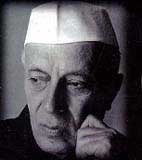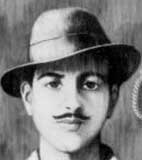This was the speech made by Jawaharlal Nehru, as the Prime Minister of an Independent India, addressing the constituent assembly and the Indian nation on 15 th august 1947.
Now, as we are about to celebrate 67 years of our Independence, we pay our tributes to all those people, who had laid down their lives in an attempt to liberate India from the clutches of British imperialism.
Freedom Struggle

The period from 1885 to 1905 was the time for sowing the seeds of Indian nationalism. The Indian National Congress was formed in 1885, under the leadership of A.O. Hume, a retired British civil servant. In 1905, Viceroy Curzon initiated the partition of Bengal to curb the nationalist feelings among the people of India. This led to the launch of the Swadeshi movement and boycott of British goods and contrary to Curzon's plan, led to the unity of all Indians.
Bal Gangadhar Tilak, Bipin Chandra Pal and Aurobindo Ghosh advocated for Swaraj, a year later. In1919, there was a widespread national campaign against the Rowlatt Act, under the leadership of Lala Lajpat Rai and others, in which he was injured fatally.

It was at this time that Gandhi appeared on the scene. His main contribution was his non-violent revolution and Satyagrah. He believed in truth, non-violence and love for fellow human beings. Gandhi launched the Salt Satyagraha, starting his march from Sabarmati Ashram to Dandi. During the Second World War, Subhash Chandra Bose turned out to be one of the dynamic leaders of the time. He gave his leadership to the Ajad Hind Fauz.
There were many women who took part in the freedom struggle during this period. Some important women freedom fighters were Aruna Asaf Ali, Sarojini Naidu, Bhikaji Cama and Sucheta Kripalani.
The Quit India resolution was adopted in 1942, urging the British to quit India at the very earliest. By June 1947, Lord Mountbatten announced his plans for partition of India. By August 1947, India was divided into two nations, the Muslim Pakistan and a secular India. British left India and there was freedom at midnight.
Impact and aftermath of Partition

But the question still arises, whether the Partition was wise and was it inevitable? The partition left both the nation devastated. The subsequent migration of the people led to endless sufferings and miseries. Not only was the country divided, but provinces of Punjab and West Bengal were also partitioned, which caused many riots and claimed many lives. Hindus and Muslims used women as instruments of power. Many were raped and looted.
India and Pakistan are still healing their wounds of partition. Boundary issues have caused many wars between the two nations. Even the imposition of an official boundary has not resolved these conflicts. They are deadlocked over the issues of possession of Kashmir. In recent times too, they have fought over issues of L.O.C. in the Kargil war. Both the nations are still in a state of constant hostility.
India Today
googletag.cmd.push(function() { googletag.display('div-gpt-ad-1417419205614-0'); });